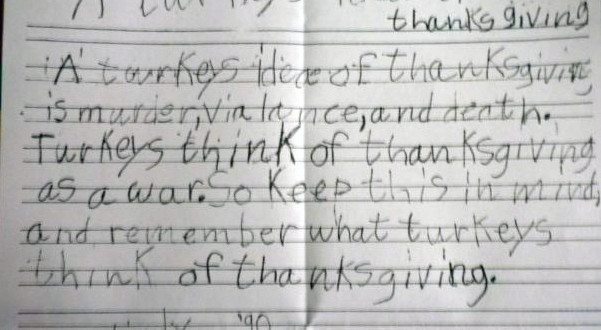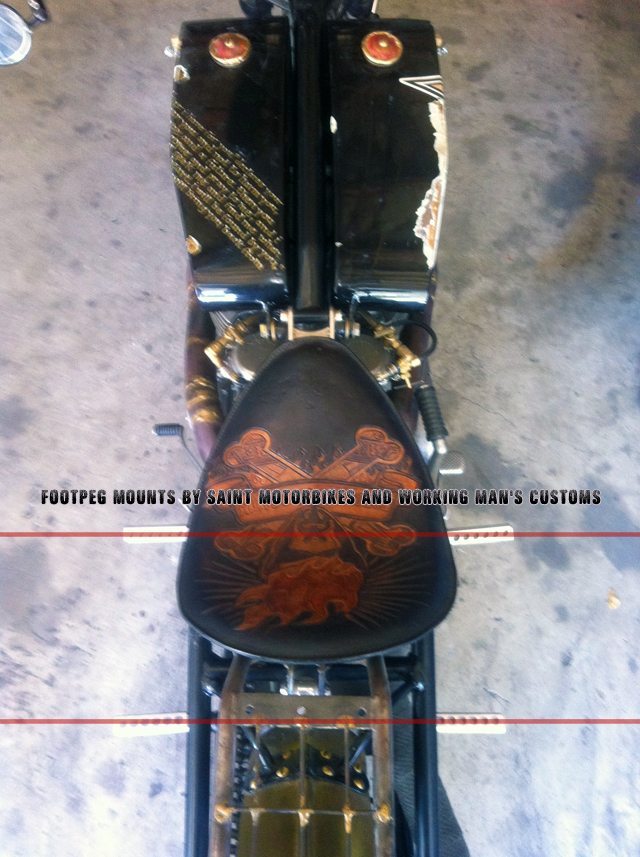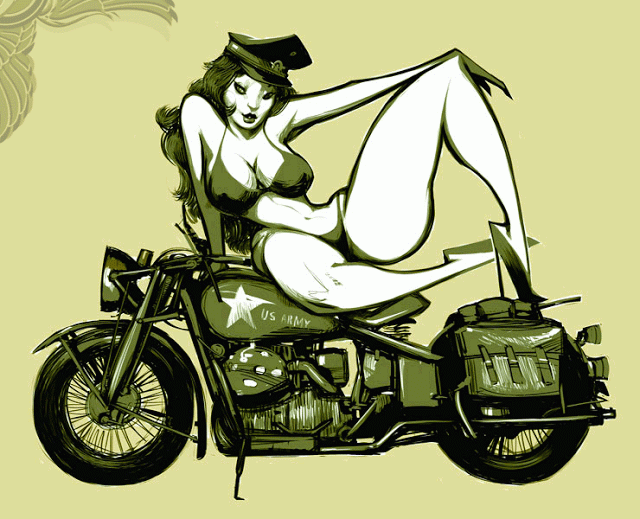I love laying down facts upon the heads of the ignorant. With “tea party” fools such as Sarah Palin ******** about anti-obesity campaigns and how to “stand with our North Korean allies,” I thought it might be prudent to share a bit of the truth behind what we now call “Thanksgiving.”
Some think it has nothing to do with our Native American brothers. Nothing could be farther from the truth. Our Thanksgiving traditions can be traced to many festivals that span numerous cultures, continents and millennia. In ancient times, the Egyptians, Greeks and Romans feasted and paid tribute to their gods after the fall harvest. Thanksgiving also bears a resemblance to the ancient Jewish harvest festival of Sukkot, about which the prophet Zechariah said all nations will make annual pilgrimages to Jerusalem to celebrate and feast there. Finally, historians have noted that Native Americans had a rich tradition of commemorating the fall harvest with feasting and merrymaking long before Europeans set foot on their shores.
Yes, their shores. That’s why the “Indians” – a misnomer given by ignorant seafarers who thought they’d landed in India – are “Native Americans.”
The American concept of Thanksgiving developed in the colonies of New England but its roots can be traced back to the other side of the Atlantic. Both the Separatists who came over on the Mayflower and the Puritans who arrived soon after brought with them traditions of days to fast and pray during difficult or pivotal moments and days to feast and celebrate, thanking *** in times of plenty.
In September 1620, the Mayflower left Plymouth, England, carrying 102 passengers. They were an assortment of religious separatists (today the FBI would call them a cult) seeking a new home where they could freely practice their faith and other individuals lured by the promise of prosperity and land ownership in the New World. After a treacherous crossing that lasted 66 days, they dropped anchor near the tip of Cape Cod, over 300 miles north of their intended destination at the mouth of the Hudson River. One month later, the Mayflower crossed Massachusetts Bay, where the “Pilgrims” began the work of establishing a village at Plymouth.
Throughout that brutal first winter, most of the colonists remained on board the ship where they suffered from exposure and disease. Only half of the Mayflower’s original passengers and crew lived to see their first New England spring. In March, the remaining settlers moved ashore, where they received an astonishing visit from an Abenaki Indian who greeted them in English. Several days later, he returned with another Native American, Squanto, a member of the Pawtuxet tribe who had been kidnapped by an English sea captain and sold into slavery before escaping to London and returning to his homeland on an exploratory expedition. Squanto taught the Pilgrims, weakened by malnutrition and illness, how to cultivate corn, extract sap from maple trees, catch fish in the rivers and avoid poisonous plants. He also helped the settlers forge an alliance with the Wampanoag, a local tribe. This informal treaty would endure for more than 50 years and remains one of the sole examples of harmony between European colonists and Native Americans.
In November 1621, after the Pilgrims’ first corn harvest proved successful, Governor William Bradford organized a celebratory feast and invited a group of the fledgling colony’s Native American allies, including the Wampanoag chief Massasoit. Now remembered as American’s “first Thanksgiving” – although the Pilgrims themselves may not have used the term at the time – the festival lasted three days.
While no record exists of the historic banquet’s exact menu, the Pilgrim chronicler Edward Winslow wrote in his journal that Governor Bradford sent four men on a “fowling” mission in preparation for the event, and that the Wampanoag guests arrived bearing five deer. Historians have suggested that many of the dishes were likely prepared using traditional Native American spices and cooking methods. Because the Pilgrims had no oven and the Mayflower’s sugar supply had dwindled by the fall of 1621, the meal did not feature pies, cakes or other desserts, which have become a hallmark of contemporary celebrations.
It was the shift from communal farming to private farming in which the people in the Plymouth Colony got to keep the benefits of their own efforts instead of sharing in a distribution of the communal effort. William Bradford, the Governor of the Plymouth Colony, was well aware of the efficiency of individual initiative.
Pilgrims held their second “Thanksgiving” celebration in 1623 to mark the end of a long drought that had threatened the harvest and prompted Governor Bradford to call for a religious fast. Days of fasting and thanksgiving on an annual or occasional basis became common practice in other New England settlements as well. As I’ve documented here previously, these fasts and feasts had historical and cultural precedence.
During the American Revolution, the Continental Congress designated one or more days of thanksgiving a year, and in 1789 George Washington issued the first Thanksgiving proclamation by the national government of the United States. In it, he set aside November 26 “to be devoted by the people of these States to the service of that great and glorious Being who is the beneficent author of all the good that was, that is, or that will be; that we may then all unite in rendering unto Him our sincere and humble thanks for His kind care and protection of the people of this country previous to their becoming a nation…” He called upon Americans to express their gratitude for the happy conclusion to the country’s war of independence and the successful ratification of the U.S. Constitution. His successors John Adams and James Madison also designated days of thanks during their presidencies.
In 1817, New York became the first of several states to officially adopt an annual Thanksgiving holiday. Each state celebrated on a different day and the American South remained largely unfamiliar with the tradition. In 1827, the noted magazine editor and prolific writer Sarah Josepha Hale (author of the nursery rhyme “Mary Had a Little Lamb”) launched a campaign to establish Thanksgiving as a national holiday. For 36 years, she published numerous editorials and sent scores of letters to governors, senators, presidents and other politicians. Abraham Lincoln finally heeded her request in 1863, at the height of the Civil War, in a proclamation entreating all Americans to ask *** to “commend to his tender care all those who have become widows, orphans, mourners or sufferers in the lamentable civil strife” and to “heal the wounds of the nation.” He scheduled Thanksgiving for the final Thursday in November, and it was celebrated on that day every year until 1939, when Franklin D. Roosevelt moved the holiday up a week in an attempt to spur retail sales during the Great Depression. Roosevelt’s plan, known derisively as “Franksgiving,” was met with passionate opposition, and in 1941 the president reluctantly signed a bill making Thanksgiving the fourth Thursday in November.
Here’s an Indian:
Thanks to history.com for this largely plagiarized article.
Now time to help the woman finish in the kitchen and then…

Get the best of bikerMetric directly in your inbox, once a week, every week.
[wysija_form id="1"]
 bikerMetric custom metric bobbers, choppers, and cafe racers by honda, yamaha, kawaski, and suzuki
bikerMetric custom metric bobbers, choppers, and cafe racers by honda, yamaha, kawaski, and suzuki










